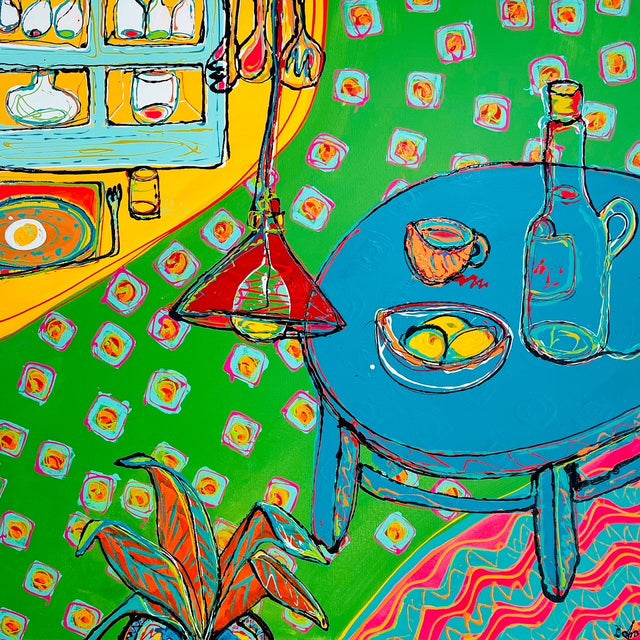Gallery
Collection: Baljit Balrow

Balrow is a Kent-based artist with over 30 years of experience in Visual Art, alongside recent studies in Art Psychotherapy. For her, art is a borderless language—a way to make sense of the mind and connect with inner dialogue. She works intuitively with colour and mixed media, exploring identity, memory, and the subconscious. Nostalgia and cultural identity often surface in her work, shaped by emotions stored away through trauma, fear, or the blur of everyday life. Growing up bilingual, she never felt fully articulate in words, but colour has always been her first language.
Balrow’s work, deeply rooted in her British-Indian heritage, pulses with vibrancy, pattern, and movement. Raised by a skilled seamstress, she developed an intuitive palette and expressive mark-making that create a meditative experience, drawing viewers into fluid, imaginative interiors and textile-like landscapes.
“When I paint intuitively, I am in a state of flow—this is when I feel I am my most honest.”
Balrow is influenced by strong female figures such as Nina Simone and Janis Joplin, as well as artists like Tracey Emin and Marina Abramović, alongside Philip Guston, David Hockney, and Henri Matisse.
Based in Kent, where she grew up, Balrow completed her BA in Visual Art, followed by a Postgraduate Diploma in Art Psychotherapy at IATE London in 2023. Her work has been exhibited in Kent, London, and India, including at SWA Mall Galleries and the National Portrait Gallery (NPG). Her 1994 degree piece, Self-Portrait with Union Jack, continues to be exhibited 30 years on and is referenced in lectures and publications worldwide.
Her abstract ‘interiors’ emerge without fixed narratives, instead evoking half-remembered places, fleeting sensations, and lingering presences—hovering between the conscious and unconscious. They attempt to capture intangible memory, with colours and patterns placed to mark fragments of time and impressions of experience.
Balrow’s work becomes a portal, an act of recognition that preserves the ephemeral—mapping the intangible through layers of colour, pattern, and familiar objects. The chaos within her compositions invites viewers to engage on a visceral level, experiencing the artwork as both deeply personal and universally resonant.









